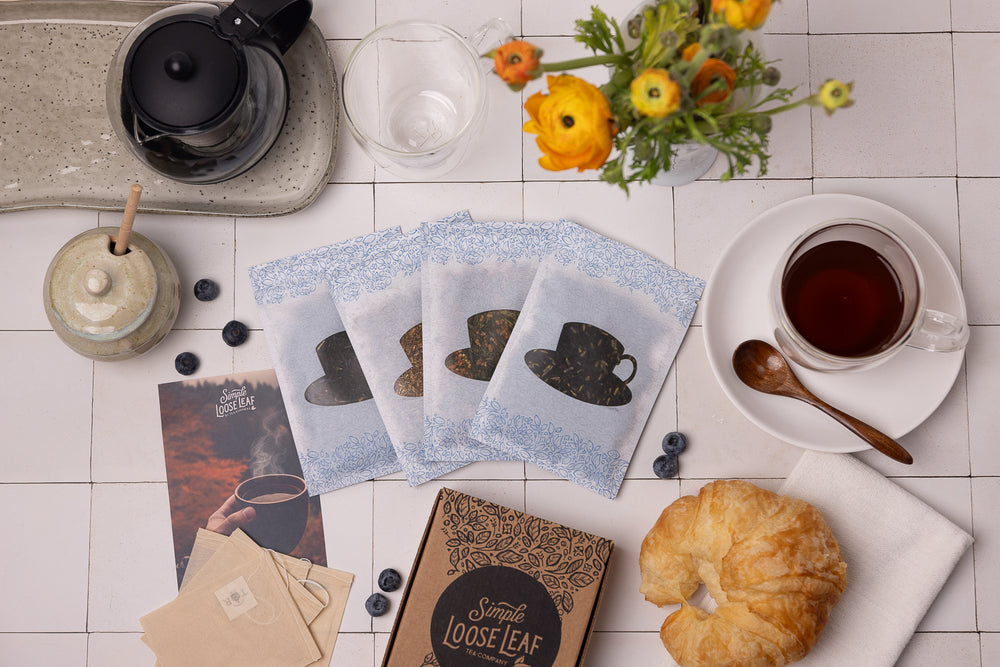Grapefruit Tea Guide
This post may contain affiliate links. Simple Loose Leaf is a participant in the Amazon Associates Program, an affiliate advertising program designed to provide a means for sites to earn advertising fees by linking to Amazon.com. Is there a better way to relax than with a cup of warming, delicious drink made with seasonal fruits? Grapefruit may be one of those citruses you either love or hate, but they make for an incredibly tasty tea. Winter is a citrus season, and it would be a shame not to use an opportunity to experiment with this amazing fruit.
What is grapefruit?
Grapefruit or Citrus × paradisi is a fruit from citrus tree growing in warm subtropical climates[1]. This cross between pomelo and orange[2] was first mentioned in the middle of the 18th century as a “forbidden fruit of Barbados[3]”. There are many types of grapefruits and all of them are edible. Grapefruit is usually less sweet than orange and less sour than lemon. Sometimes it may be slightly bitter. It’s popular because of its juicy, citrusy flavor and benefits and is one of the most important seasonal citruses. Today, grapefruits are available worldwide and you can buy them in many grocery stores and supermarkets.Benefits of grapefruit tea
Just like other citruses, grapefruits may offer a whole range of potential health benefits. They are low in calories and contain “niacin, ascorbic acid, vitamin A, potassium, phosphorus, calcium, carbohydrate, protein, fat, iron, sodium, riboflavin and thiamine.[4]” They may aid in weight loss[5], prevent brain diseases[6], lower the risk of stroke[7] and provide vitamins and other nutrients. However, grapefruits may interact with many drugs, so be cautious before including them into your diet. Studies suggest interactions with “lipid lowering agents, calcium channel blockers, cytotoxic drugs, antidepressants, antimalarials, drugs used in erectile dysfunction” and other medicine[8].Grapefruit Tea Recipe
There are different types of grapefruits, and the most common ones are yellow, pink and red. Yellow grapefruits are usually slightly bigger and have yellow skin and yellow flesh. Pink grapefruits have yellow skin and pink-red flesh, while red grapefruit usually have orange-red skin and red flesh. They will all have a slightly different flavor. Some will taste better blended with fresh, green loose leaves, some are wonderful with sweeter herbal blends.Red Grapefruit Tea Recipe
What makes red grapefruit especially interesting are not only potential benefits and flavor, but intense red color as well. Teas made with red grapefruit will look amazingly tasty served in glass cups. They are sweeter than yellow grapefruits and go well with sweeter teas. Rooibos, a South African red bush tea, is a perfect match for this type of grapefruit. Alternatively, leave out the rooibos tea leaves and use only pure grapefruit juice. Add a bit of cinnamon, and you will have a perfectly soothing and warming winter drink. This recipe makes 2 cups of tea.Ingredients:
- Juice of two red grapefruits
- 2 teaspoons of pure rooibos tea
- A teaspoon of honey per cup
- 1 cinnamon stick
- 1 cup of water
- In a medium pan, bring fresh spring water to a boil.
- Squeeze the grapefruit juice.
- Add cinnamon stick, red rooibos tea and grapefruit juice and simmer on low fire for 10 minutes.
- Strain the tea into two cups.
- Add honey and serve.
Yellow Grapefruit Tea Recipe
Yellow grapefruit is bolder, less sweet, and sometimes even slightly bitter. It’s more sour and refreshing than red grapefruit, and it goes very well with green tea and spices. This recipe works without green tea, so remove it if you want a caffeine free drink.Ingredients:
- Juice of one yellow grapefruit
- 2 teaspoons of Makaibari Green or Gunpowder tea
- A few juniper berries
- A teaspoon of honey per cup
- ½ inch of fresh ginger
- 1 cup of water
- In a medium pan, bring fresh spring water to a boil.
- Squeeze the grapefruit juice.
- Peel and slice ginger.
- Add ginger, juniper berries and grapefruit juice and simmer on low fire for 5 minutes.
- Remove from the heat and add green tea leaves.
- Steep for 3 minutes.
- Strain the tea into two cups.
- Add honey and serve.
Disclaimer: This article is for informational purposes only. It’s not intended to replace medical advice, diagnosis or treatment. Every person is different and may react to different herbs and teas differently. Never use teas or herbs to treat serious medical conditions on your own. Always seek professional medical advice before choosing home remedies.
References:
[1] https://hort.purdue.edu/newcrop/morton/grapefruit.html [2] https://www.researchgate.net/publication/283645877_Grapefruit_Juice_Nutritional_Values_and_Drug_Interactions [3] https://hort.purdue.edu/newcrop/morton/grapefruit.html [4] https://www.researchgate.net/publication/283645877_Grapefruit_Juice_Nutritional_Values_and_Drug_Interactions [5] https://pubmed.ncbi.nlm.nih.gov/16579728/ [6] https://www.sciencedaily.com/releases/2012/02/120223182638.htm [7] https://www.stroke.org.uk/sites/default/files/healthy_eating_and_stroke.pdf [8] https://www.researchgate.net/publication/283645877_Grapefruit_Juice_Nutritional_Values_and_Drug_Interactions
More from:
SLL




Leave a comment